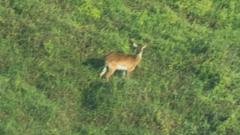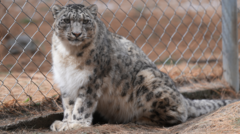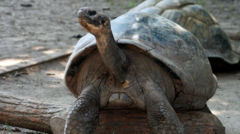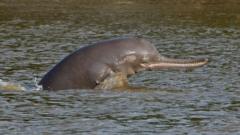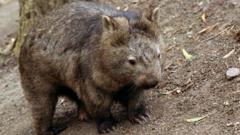A recent successful breeding program has brought two species of Desertas Island land snails back from the brink of extinction as they are released on a protected island in the Atlantic.
Reviving the Desertas Island Snail: Over 1,300 Critically Endangered Snails Released

Reviving the Desertas Island Snail: Over 1,300 Critically Endangered Snails Released
In a historic conservation effort, over 1,300 critically endangered snails have been reintroduced to their native habitat on Bugio Island.
The meticulously executed release of 1,329 pea-sized, critically endangered land snails marks a significant achievement in conservation efforts aimed at reviving two species that were thought to have been extinct for nearly a century. These tiny molluscs, native to the remote Atlantic island of Deserta Grande near Madeira, were collected and bred in captivity after a small surviving population was discovered on rocky cliffs during conservation expeditions from 2012 to 2017.
Invasive species, including rats and goats, had devastated their habitat, leading to a believed extinction status. Conservationists took to action when they found approximately 200 survivors, and a concerted breeding effort ensued, notably at Chester Zoo, where specialized habitats were created for the snails.
On their release day, these snails were carefully marked with non-toxic identification dots, enabling researchers to monitor their movements and survival in their restored ecosystem on Bugio, which has been free from invasive predators. Conservation biologist Dinarte Teixeira emphasized the importance of tracking the snails to observe their growth and adaptation in the wild.
Gerardo Garcia, a conservation expert from Chester Zoo, described the release as a pivotal moment in the recovery plan for these species, noting the possibility of more snails being released in the coming spring, depending on the success of this initiative. The snails play a crucial role in their ecosystem, aiding the breakdown of organic matter and nourishing the soil, supporting the growth of plants and contributing to the biodiversity of the islands.
As the team continues to monitor the impact of these snails, this operation represents a powerful example of what coordinated conservation efforts can accomplish in safeguarding our planet's natural heritage.
Invasive species, including rats and goats, had devastated their habitat, leading to a believed extinction status. Conservationists took to action when they found approximately 200 survivors, and a concerted breeding effort ensued, notably at Chester Zoo, where specialized habitats were created for the snails.
On their release day, these snails were carefully marked with non-toxic identification dots, enabling researchers to monitor their movements and survival in their restored ecosystem on Bugio, which has been free from invasive predators. Conservation biologist Dinarte Teixeira emphasized the importance of tracking the snails to observe their growth and adaptation in the wild.
Gerardo Garcia, a conservation expert from Chester Zoo, described the release as a pivotal moment in the recovery plan for these species, noting the possibility of more snails being released in the coming spring, depending on the success of this initiative. The snails play a crucial role in their ecosystem, aiding the breakdown of organic matter and nourishing the soil, supporting the growth of plants and contributing to the biodiversity of the islands.
As the team continues to monitor the impact of these snails, this operation represents a powerful example of what coordinated conservation efforts can accomplish in safeguarding our planet's natural heritage.




